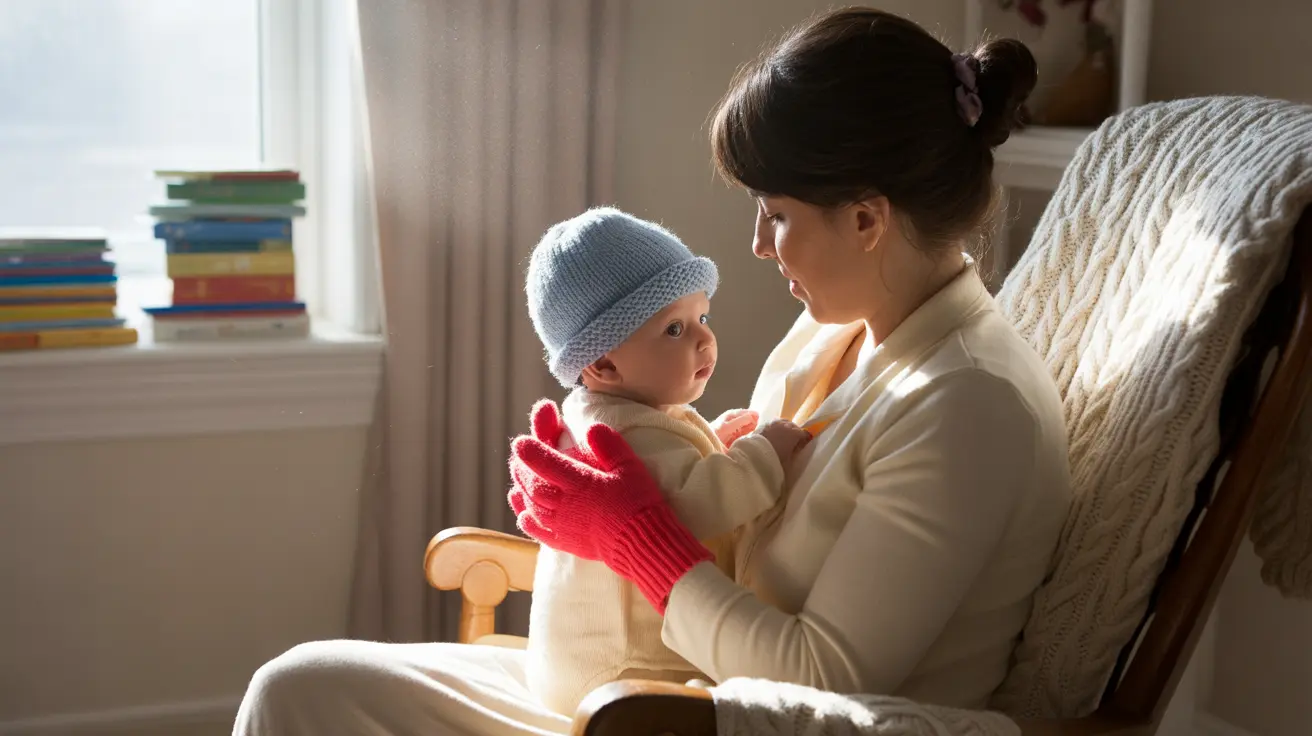Caring for a baby during winter requires special attention to ensure they stay warm, safe, and healthy. As parents, understanding how to properly dress and protect your little one from harsh winter conditions is crucial for their well-being and comfort.
This comprehensive guide will help you navigate the challenges of caring for your baby during the cold winter months, from proper clothing choices to skin care and safe transportation.
Dressing Your Baby for Winter Weather
The key to keeping babies comfortable in winter is layering their clothes properly. Start with a breathable base layer, add warm middle layers, and finish with an appropriate outer layer for weather protection.
The Layer System
- Base layer: Cotton onesie or thermal underwear
- Middle layer: Warm clothes like sweaters and pants
- Outer layer: Winter coat or snowsuit
- Accessories: Hat, mittens, and warm booties
Remember to dress your baby in one more layer than what you're wearing, as they can't regulate their body temperature as effectively as adults.
Temperature Monitoring and Safety
Keeping track of your baby's temperature during winter outings is essential. Check their neck, ears, and chest regularly – these areas provide better indicators of their true temperature than hands or feet, which naturally tend to be cooler.
Signs Your Baby is Too Cold
- Pale or bluish skin
- Cold to touch, especially on chest and stomach
- Lethargy or unusual fussiness
- Shivering
Signs of Overheating
- Flushed, red skin
- Sweating, particularly at the neck
- Rapid breathing
- Irritability
Winter Skin Care for Babies
Winter air can be particularly harsh on your baby's delicate skin. Implement a proper skincare routine to prevent dryness and irritation.
Essential Skin Protection Tips
- Use fragrance-free, hypoallergenic moisturizer
- Apply petroleum jelly to protect against wind burn
- Keep baths short and lukewarm
- Use a humidifier in baby's room
Safe Winter Transportation
When traveling with your baby in winter, safety preparations are crucial. Never place your baby in a car seat wearing bulky winter clothes, as this can compromise the car seat's effectiveness.
Car Safety Guidelines
- Remove bulky coats before securing in car seat
- Use thin, warm layers instead
- Keep a blanket in the car for extra warmth
- Pre-warm the car before trips
Indoor Winter Care
Maintaining proper indoor conditions is just as important as outdoor protection during winter months.
Creating a Safe Indoor Environment
- Keep room temperature between 68-72°F (20-22°C)
- Maintain humidity levels between 30-50%
- Position cribs away from windows and heating vents
- Regular cleaning to reduce winter allergens
Frequently Asked Questions
How should I dress my baby for outdoor winter weather to keep them warm but not overheated? Layer your baby's clothing, starting with a breathable base layer, adding warm middle layers, and finishing with an appropriate outer layer. Always check their core temperature regularly and adjust clothing as needed.
What are the signs that my baby is too cold or too hot during winter outings? Signs of being too cold include pale skin, cold chest area, and unusual fussiness. Signs of overheating include red skin, sweating (especially at the neck), and rapid breathing.
Is it safe for babies to go outside in very cold temperatures, and how long can they stay out? Babies can go outside in cold weather if properly dressed, but limit exposure when temperatures fall below 20°F (-6°C). Keep outings brief, typically 15-30 minutes maximum in cold conditions.
How can I protect my baby's sensitive skin from dryness and irritation during winter? Use fragrance-free moisturizer, keep baths short and lukewarm, run a humidifier, and protect exposed skin with petroleum jelly before heading outdoors.
What precautions should I take when transporting my baby in a car during cold weather? Remove bulky winter wear before placing your baby in their car seat, use thin warm layers instead, and keep a blanket handy for additional warmth. Always pre-warm the car before trips with your baby.




